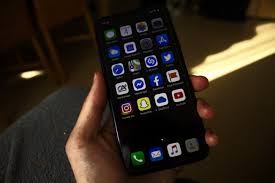The Overlooked Addiction

Do you get anxious when you’re away from your phone? Many people nowadays have some sort of attachment to their phones. Think about how you feel when you’re mindlessly scrolling through social media, does it make you feel happy? A study done by the Journal of the American Medical Association (JAMA) shows that teens and young adults that spend more than 3 hours per day on social media are at a higher risk of developing mental health problems.

I’m sure most of us can say that going without checking your social media for a long time can start to feel unnerving like you’re missing out. Social media platforms use algorithms and advertisement tracking to find out what you like and what your hobbies are. They then show you posts and videos that fit those interests only to keep you scrolling. When you are shown something that you like, neurotransmitters in your brain release a chemical called dopamine. Dopamine is the chemical in your brain that allows you to feel pleasure, satisfaction, and motivation, and that hit of dopamine can become addicting. Dr. Nancy Deangelis, a Certified Registered Nurse Practitioner from Jefferson Health says “Social media platforms drive surges of dopamine to the brain to keep consumers coming back over and over again. The shares, likes, and comments on these platforms trigger the brain’s reward center, resulting in a high similar to the one people feel when gambling or using drugs.”
The overuse of social media is beginning to become problematic, especially with our youth. On average, your brain doesn’t finish developing until you’re 21, but it’s been shown that the reward system part of the brain is starting to develop faster than it used to, all because of the almost constant use of technology. “Society and academia push the use of technology to create efficiency, but at the same time we need to understand the potential negative effects,” says Dr. Ofir Turel, Associate Professor, CSU, Fullerton. Another issue arises when you bring up attention spans. Attention spans have decreased at an alarming rate, Gloria Mark, Ph.D., a chancellor’s professor of informatics at the University of California, did a study on the different types of attention spans we have and how they’ve decreased over the years, “back in 2004, we found the average attention span on any screen to be two and a half minutes on average. Throughout the years it became shorter. So around 2012 we found it to be 75 seconds, then in the last five, six years, we found it to average about 47 seconds” That’s almost four times shorter than it was in 2004.
Giving yourself more frequent breaks from social media is something that may be very beneficial, especially if you find yourself scrolling on your phone for hours on end. Working on putting your phone down and remembering that it does more harm than good is the first step to breaking that chain between you and the online world.





